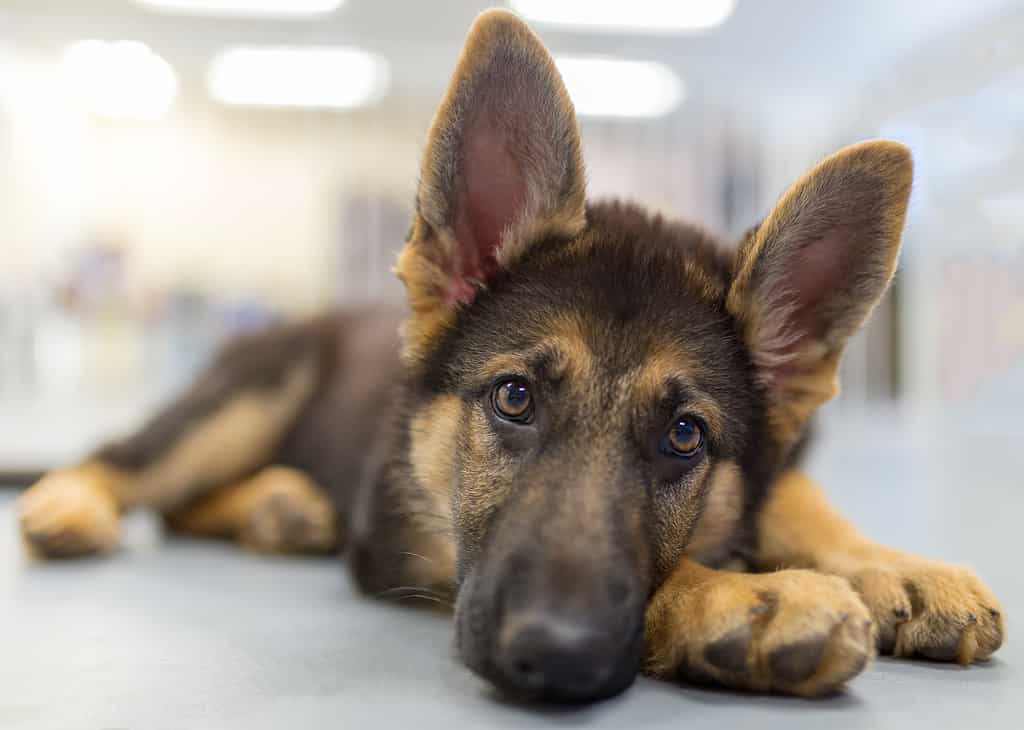Alright, let’s talk about figuring out when to spay a German Shepherd. It’s one of those things where everyone seems to have an opinion, and honestly, it drove me a bit nuts when I was trying to decide for my girl, Luna.
So, we got Luna as a puppy, full of beans, all ears and paws. The vet, nice guy, immediately brought up spaying around the 6-month mark. Said it was standard practice, cuts down on cancer risks later, prevents accidental litters, you know the drill. Seemed straightforward enough at first.

But then I started talking to other GSD owners. You run into people at the park, training classes, whatever. And the stories were all over the place. Some folks did it early like the vet suggested, no problems. Others waited, like really waited, sometimes a year, year and a half, even two years. Their reasoning? Mostly about letting the dog mature physically, especially the bones and joints. German Shepherds aren’t small dogs, and I kept hearing about growth plates needing hormones to close properly. The idea of messing that up and causing hip or elbow problems down the line? That really stuck with me.
Digging into it (and getting confused)
So, I went down the rabbit hole. Tried reading up on it. One article says spay early to avoid mammary tumors. Another says waiting might reduce the risk of certain other cancers, like osteosarcoma, and some joint issues. It felt like trading one set of risks for another. Total headache.
Here’s what I started focusing on for Luna specifically:
- Breed Size & Growth: She’s a GSD. Big dog, prone to hip and elbow dysplasia. Letting those growth plates close seemed important. Early spaying, before maturity, apparently removes hormones that help regulate that process.
- Lifestyle: Luna was (and is) very active. We hike, run, play fetch hard. Joint health is paramount for her quality of life.
- Behavior: Honestly, she was a pretty easy puppy. Not overly reactive or showing signs of hormone-driven issues early on.
- Cancer Risks: This was the tough one. Yes, spaying reduces mammary cancer and eliminates pyometra risk. But the stuff about potentially increased risks for other cancers if done too early was worrying too.
Making the Call
After chewing on it for ages, talking myself in circles, I decided against the early 6-month spay. It just didn’t sit right with me for a large, active breed potentially prone to joint issues. I felt the potential benefits of letting her mature a bit more outweighed the risks for us. We’re responsible owners, not planning on breeding, and capable of managing her through a heat cycle if needed.
So, the plan became: wait until after her first heat cycle. This seemed like a middle ground. Let her body develop more naturally with those initial hormones, get through one cycle, and then spay her a few months after it ended. Vets usually recommend waiting 2-3 months post-heat so the tissues aren’t as swollen or vascular, making surgery safer.
Luna went into her first heat around 11 months old. It wasn’t exactly fun – the mess, keeping her away from intact males, the constant vigilance. But we managed. It lasted about three weeks. Then, we booked her spay appointment for when she was about 14 months old.
The Spay Day & Recovery
Dropping her off that morning sucked, plain and simple. You feel like a traitor leaving them looking all confused. Picked her up in the evening, she was groggy, pathetic-looking with the giant cone of shame. The first couple of days were rough, mostly managing her discomfort and keeping her from licking the incision.

The hardest part? Keeping a young, energetic GSD calm for 10-14 days. No running, jumping, roughhousing. Leash walks only for potty breaks. It required serious management – crate rest, puzzle toys, chews, basically anything to keep her occupied without being physically active. We alternated between the cone and a surgical suit, which she tolerated a bit better.
Looking Back
Now, years later? Luna’s doing great. She’s active, healthy, no joint problems so far (knock on wood!). Do I know for absolute certain that waiting was the perfect choice? Nope. Nobody has a crystal ball. But based on the information I had, my specific dog, and our lifestyle, it felt like the most responsible decision for her. Spaying is important, but the timing isn’t always a one-size-fits-all answer, especially with larger breeds. You just gotta gather the info, consider your own dog, and make the best call you can.






